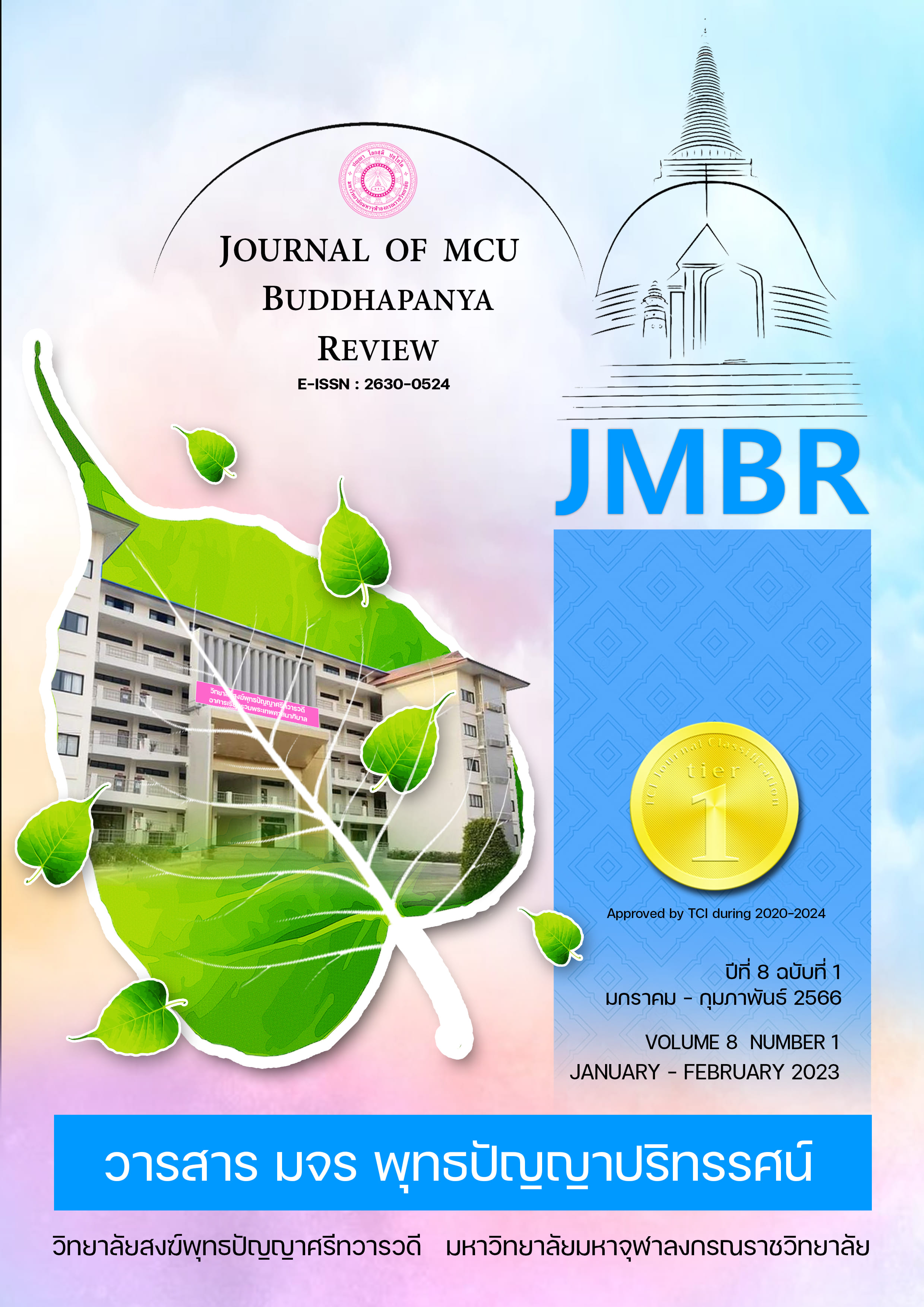THE CREATION OF DIGITAL GAME ON SMARTPHONE TO PROMOTE LANNA CULINARY ART IN CHIANG MAI PROVINCE
คำสำคัญ:
Digital Game Design, Mobile Game, Lanna Culinary Art, Cultural Promotionบทคัดย่อ
The mix method was used in this research article, which was based on the concepts of local culinary arts and mobile game design. The study takes place in Muang, a district in Chiang Mai province, and the subjects are 30 undergraduates chosen using a purposive sampling method. In terms of the tools used in the study, there are three types: 1) Four expert and specialist interviews 2) A workshop with 30 attendees 3) Questionnaires for research participants After that, all of the primary data was analyzed using descriptive statistics and narrative reasoning.
The result of the study reveals: 1. The ways in which information concerning culinary arts, especially those used to promote Lanna's culture, is currently disseminated is through museum exhibitions and workshops, which are less likely to satisfy their interest. 2. Knowledge and interdisciplinary approaches in design and development are required to create a digital game on smartphones with the goal of promoting certain cultural aspects among Thai teenagers. Not only how the game works, but also how to keep players motivated while playing, must be incorporated into the design by 1) having the game characters tell the story, 2) presenting dominant characteristics of Lanna culture, and 3) designing the gameplay around Lanna cooking methods. 3. The digital games on smartphones promote the culinary arts of Lanna’s culture to present its identity with ease of use for users.
The research findings suggest that to apply knowledge of cooking culture in digital game development, it is necessary to involve experts in all the related areas which include scientists, mathematicians, experts in cultures, and artists in the project to ensure that the game is guided in the right direction so that it can be used as teaching material in classroom and part of museum exhibition. This way, the game will allow more young people, as well as tourists with an interest in culture, to access another form of content representing the arts and culture of the country.
เอกสารอ้างอิง
Adams, E. (2019). Fundamentals of Game Design, 3rd Edition. New Riders, Pearson Education, Inc.
Thongmee O., Rodhetbhai C., and Siltragool W., (2015), Lanna Food: The Cultural Management Strategy for the Creative Economy Development, Journal of Social Sciences, Humanities, and Arts, Silpakorn University, 15, 3.
UNESCO. (2007). Intangible Heritage/2003 Convention. Retrieved on 1st June, 2021, from http://www.unesco.org/culture/ich/index.php?lg=en&pg=00022#art2.
Sharif, M.S., Rahman, A.E., Zahari, M., and Abdullah, K.M. (2018). Malay Traditional Food Knowledge Transfer. Asian Journal of Quality of Life, 3, 10; 79-88.
Sung, H.Y., Hwang, G.J. Lin, C.J. and Hong, T.W. (2017) Experiencing the analects of Confucius: an experiential game-based learning approach to promoting students’ motivation and conception of learning, Computers & Education, 110; 143–153.
Tlili, A., Essalmi, F. and Jemni, M. (2016). Improving learning computer architecture through an educational mobile game, Smart Learning Environments, 3, 7.
Al-Hunaiyyan, A., Alhajri, R.A. and Al-Sharhan, S. (2018), Perceptions and challenges of mobile learning in Kuwait, Journal of King Saud University – Computer and Information Sciences, 30; 279–289.
Suwanapha C., Woowong O., and Suphametheesakul S., (2017). Local food: the management process for the quality of life and social ethics in northern communities, Research report, Funded by Mahachulalongkornrajavidyalaya.
Aromkliang T. and Chatraphorn S. (2014). Sustainability of Local Wisdom Transferring on Lanna Food. Kasetsart J. (Soc. Sci) 35: 189 – 205.
Fullerton, T., Swain, C., and Hoffman, S. (2004). Game Design Workshop: Designing, Prototyping, & Playtesting Games. CMP Books, San Francisco, New York & Lawrence.
Zubek, R. (2020). Elements of game design. Massachusetts London, England: The MIT press Cambridge.
Deacon, P. (2020). UX and UI Strategy: A step by step Guide on UX and UI design. United States of America.
Schell, J. (2020). The Art of Game Design: A Book of Lenses, 3rd edition. United State : Taylor & Francis Group, LLC, CRC press.
Malegiannaki I. A., Daradoumis T. and Retalis S. (2020). Teaching Cultural Heritage through a
Narrative- based Game. Journal on Computing and Cultural Heritage. 13, 4.
Zhao S., Kirk D., Bowenand S., and Wright P. (2018). Enhancing the Appreciation of Traditional Chinese Painting Using Interactive Technology, Multimodal Technologies and Interact, 2, 16.
Chai-Arayalert, S., and Puttinaovarat, S. (2021). A Digital Micro-Game Approach to Improve the Learning of Hand-Weaving Art and History. International Journal of Emerging Technologies in Learning (iJET), 16, 8; 4–19.
Federici S. and Borsci, S. (2010). Usability evaluation: models, methods, and applications. The Center for International Rehabilitation Research Information and Exchange (CIRRIE).
Bangsud S. and Arom P., (2015) Flavor of Lanna - Traditional Heritage of Cuisine, Sangdad Publishing.
Sikhiram N., (2018). Food Culture in Lanna Way of Life, Journal of Food Health and Bioenvironmental Science, 11, 2: 56-66
Al-Hunaiyyan, A., Alhajri, R.A. and Al-Sharhan, S. (2018), Perceptions and challenges of mobile learning in Kuwait, Journal of King Saud University – Computer and Information Sciences, 30; 279–289.
Angelo, J., Ribeiro, A., Gotardi, G., Medola, F. and Rodrigues, S. (2019). Video game simulation on car driving: Analysis of participants’ gaze behavior and perception of usability, risk, and visual attention. Strategic Design Research Journal, 12, 3.
ดาวน์โหลด
เผยแพร่แล้ว
รูปแบบการอ้างอิง
ฉบับ
ประเภทบทความ
สัญญาอนุญาต
ลิขสิทธิ์ (c) 2023 วารสาร มจร พุทธปัญญาปริทรรศน์

อนุญาตภายใต้เงื่อนไข Creative Commons Attribution-NonCommercial-NoDerivatives 4.0 International License.



